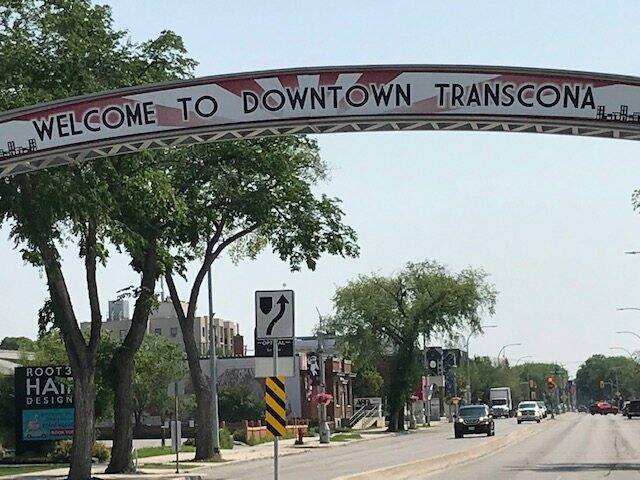A brief history of Transcona
Advertisement
Hey there, time traveller!
This article was published 12/07/2023 (815 days ago), so information in it may no longer be current.
Being a resident of Transcona, I’ve heard many comments over the years about how far Transcona is from everything. Although Transcona is now a suburb of the city, it was, in fact, not always part of Winnipeg.
Beginning in 1835, the area we now know as Transcona was administered by the council of Assiniboia. In 1870, the province of Manitoba was created and assumed control of the area.
The community of Transcona came to be in 1908, when the Grand Trunk Pacific and the National Transcontinental Railway chose a large area of land east of Winnipeg as the location for repair and maintenance of their railways. The plan was to build a town, so that roads and municipal services such as water and sanitation would be available to those working for the railways.

Photo by Cindy Murdoch
An arch over Regent Avenue welcomes present-day visitors to downtown Transcona.
Construction camps were initially set up for the railway employees, but many men chose to build homes in the area for their families, anticipating work with the railroad for years to come. As a result, Transcona grew quickly and by 1910 the population was reported to be 1,600.
April 6, 1912, was the day Transcona officially became a town. Within a short time, Transcona had a mayor and six town councillors.
As Transcona’s population continued to grow, more businesses located to the area and by 1916, Transcona had grown to be the second-largest town in Manitoba.
Unfortunately, the town declared bankruptcy. in 1921 The mayor and council were required to resign and administration of Transcona was subsequently handed over to the Manitoba government until 1928, when a new council and mayor were elected.
The population was said to remain below 6,000 until the 1950s, when the post-war boom saw further expansion of the town with the population rising to 8,000 by 1955.
By 1961, Transcona gained a city charter and became known as the City of Transcona. Just over 10 years later, in 1972, Transcona and other municipalities merged with, and became part of Winnipeg as part of what was then known as Unicity, which was created by the province’s 1971 City of Winnipeg Act.
Although I have lived in the area for many years, I had never really given much thought to the origin of its name. I recently learned that Transcona came to be by combining the name Transcontinental with Strathcona, after Lord Strathcona — Donald Smith, a former Manitoban who was instrumental in building the Canadian Pacific Railway.
With its population currently estimated at over 40,000, Transcona continues to grow with new homes and retail businesses popping up all over. Welcome to Transcona!

Our newsroom depends on a growing audience of readers to power our journalism. If you are not a paid reader, please consider becoming a subscriber.
Our newsroom depends on its audience of readers to power our journalism. Thank you for your support.




